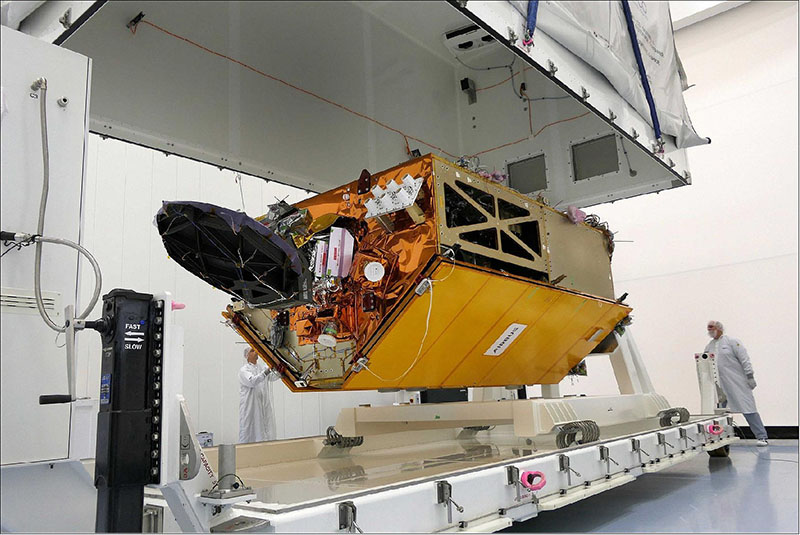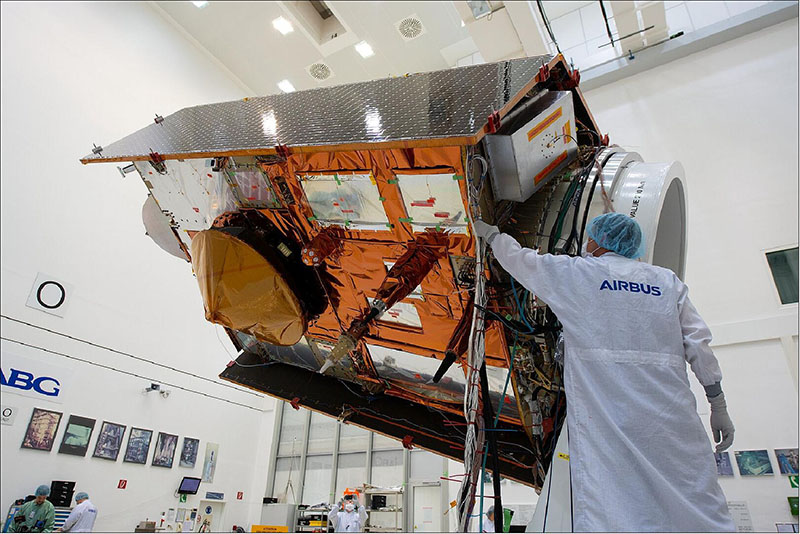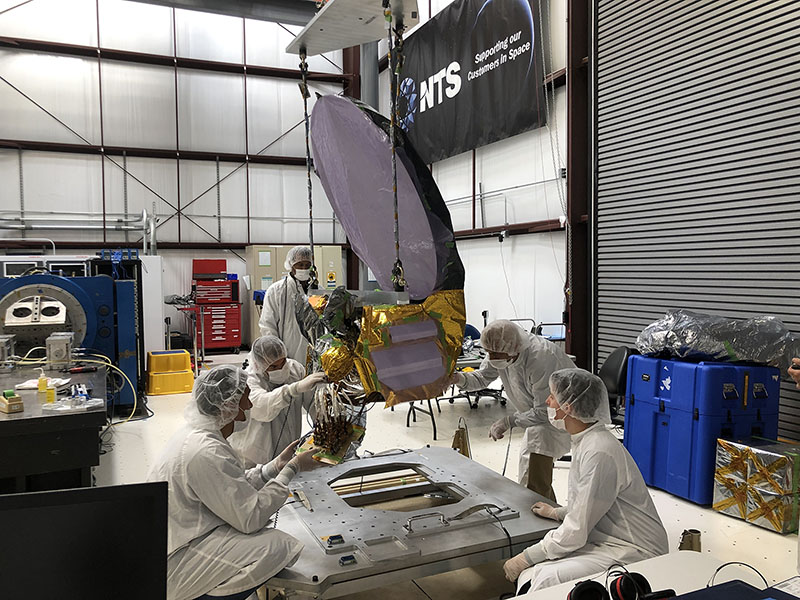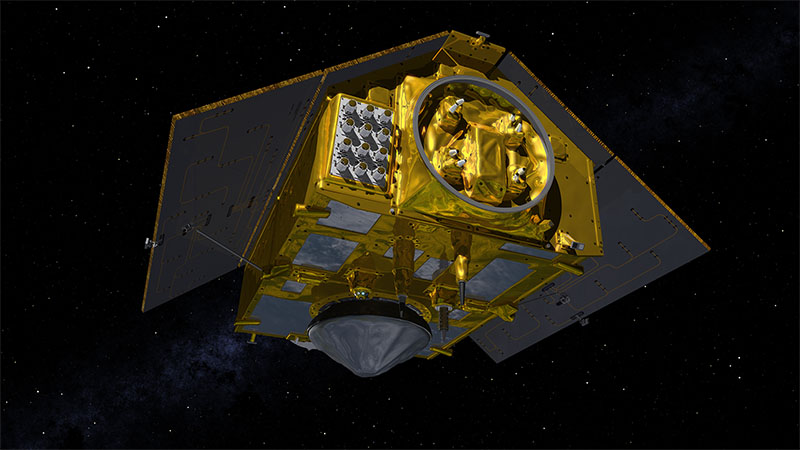The Sentinel-6 Michael Freilich spacecraft undergoes tests at an Airbus facility in Friedrichshafen, Germany, in 2019.
Image credit: Airbus
Satellite Bus
The Sentinel-6 Michael Freilich spacecraft was built by Airbus Defence and Space in Friedrichshafen, Germany. It is 16 feet, 11 inches (5.15 meters) long, 7 feet, 7 inches (2.35 meters) high, 8 feet, 5 inches (2.58 meters) wide and weighs 2,628 pounds (1,192 kilograms) including onboard propellant.
POWER SYSTEM
The electrical system of the Sentinel-6 Michael Freilich satellite comprises all the necessary hardware to operate the spacecraft while allowing the onboard systems to execute the software. The electrical power subsystem generates energy via sunlight collected by the 185.1-square-foot (17.5-square-meter) body-mounted solar arrays. Each array consists of gallium arsenide (GaAs) solar cells that cover the top and sides of the satellite like a tent. Excess energy is stored in a lithium-ion battery (based on 1,152 cells, split into two modules) with a total capacity of approximately 200 amp hours. The system provides an average of 1 kilowatt of electrical power in orbit.
THERMAL CONTROL
A spacecraft's thermal control subsystems keep it, and the science instruments it carries, within allowable temperature limits. The Sentinel-6 Michael Freilich spacecraft utilizes a combination of passive- and active-control elements to achieve this. The passive elements include multilayer insulation blankets and dedicated radiators covered with secondary surface mirrors that radiate heat away from the spacecraft. The main structure is partly painted black internally to minimize temperature gradients inside the spacecraft. For active temperature control, heaters are installed in dedicated areas.
TELECOMMUNICATIONS
Communication between the satellite and the ground is accomplished using microwave S-band and X-band transmitters and antennas located on the nadir (Earth-facing) panel of the spacecraft.
The tracking, telemetry, and command (TT&C) system is composed of two permanently active receivers and two transmitters (one that is permanently active and one that acts as backup, and is used only in contingencies) that allow conventional S-band communications with Earth, providing an uplink data rate of up to 32 kilobits per second and a downlink data rate of 1 megabit per second.
In addition, the payload data handling and transmission (PDHT) system has its own X-band antenna that is only used to transmit scientific and telemetry data to the ground at a downlink data rate of 150 Mbit/s.
ONBOARD DATA HANDLING
The Sentinel-6 Michael Freilich onboard data handling systems provide the central processor and mass memory software resources for the spacecraft and management of the science data.
The data handling subsystem is in charge of the overall spacecraft command and control. It provides necessary input and output capabilities for the attitude and orbit control system as well as for power and thermal systems operations. In addition, it performs spacecraft health functions, including fault detection, isolation, and recovery operations.
The PDHT system includes the mass memory and formatting unit (MMFU), a standalone solid mass memory unit that is based on SDRAM (synchronous dynamic random-access memory) technology, providing 352 GB of data storage. The MMFU also processes the science data and links it to the X-band subsystem (XBS), which then transmits it to ground stations via the X-band antenna.
ATTITUDE AND ORBIT CONTROL SUBSYSTEM
The satellite's "attitude," or orientation and orbit control, is managed by a system consisting of sensors, actuators, and software. Subsystems include reaction wheels, magnetic torquers, magnetometers, a coarse Earth and Sun sensor, a rate measurement unit, a star tracker, and precise orbit determination (POD) instruments. They work together to provide three-axis stabilized Earth-pointing attitude control during all mission modes, and they measure spacecraft rates and orbital position.
The POD instruments include a global navigation satellite system (GNSS) and precise orbit determination receiver (GNSS-POD), a Doppler Orbitography and Radiopositioning Integrated by Satellite (DORIS) instrument, and a laser retroreflector array (LRA). These instruments work in concert to determine the exact orbital position of the satellite so that sea level measurements can be made by the altimeter to a high degree of accuracy and precision. Although not required to meet mission requirements, the GNSS-Radio Occultation (GNSS-RO) instrument also produces data that can be optionally used by scientists to further improve the estimate of the satellite orbit.




